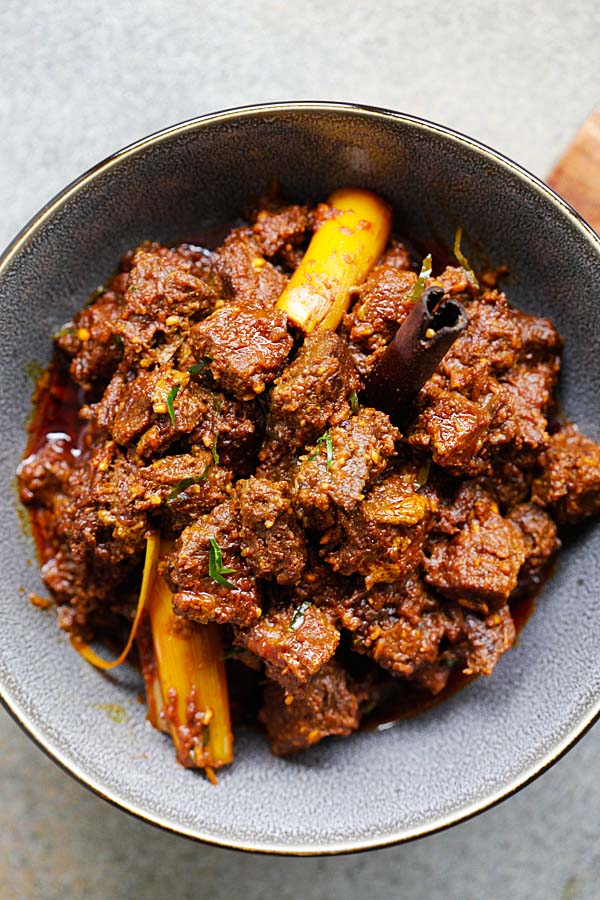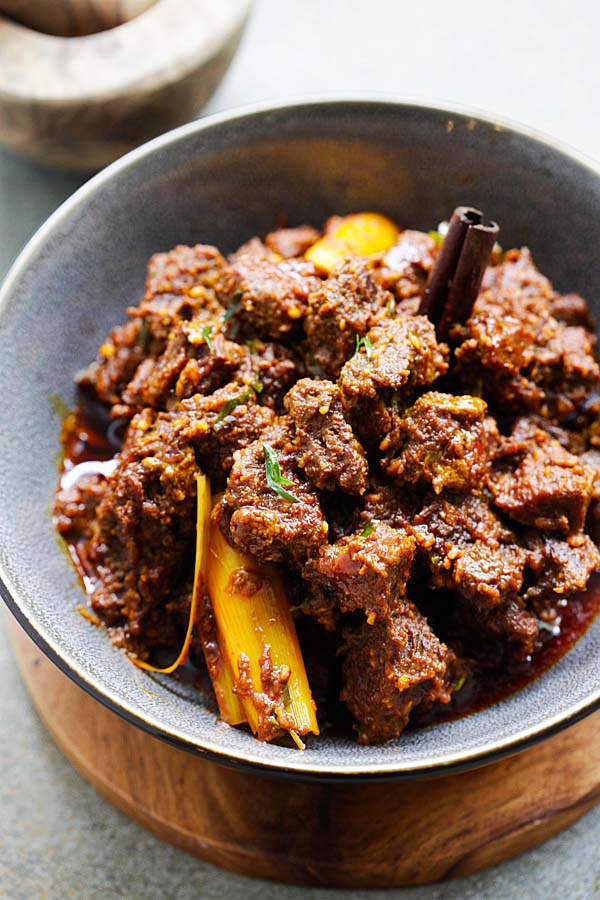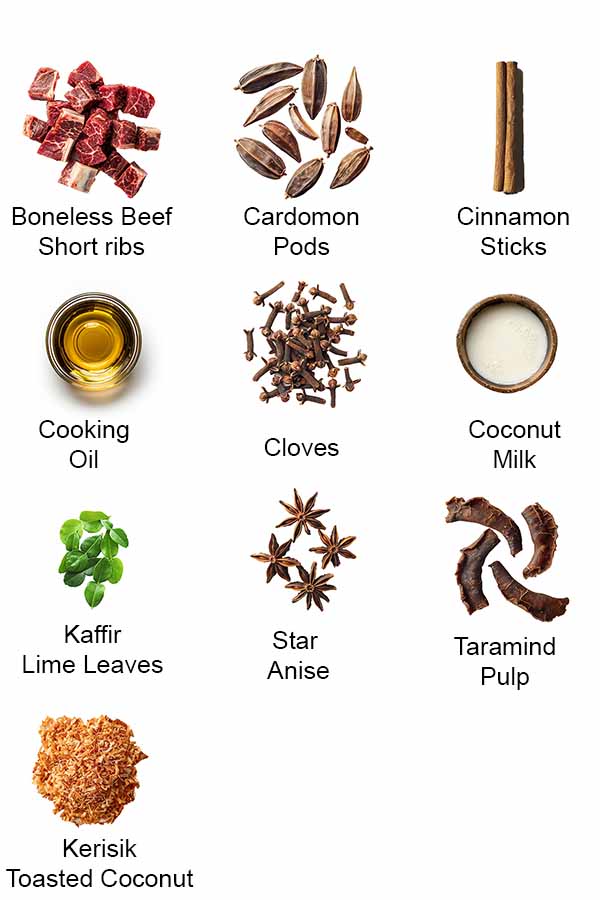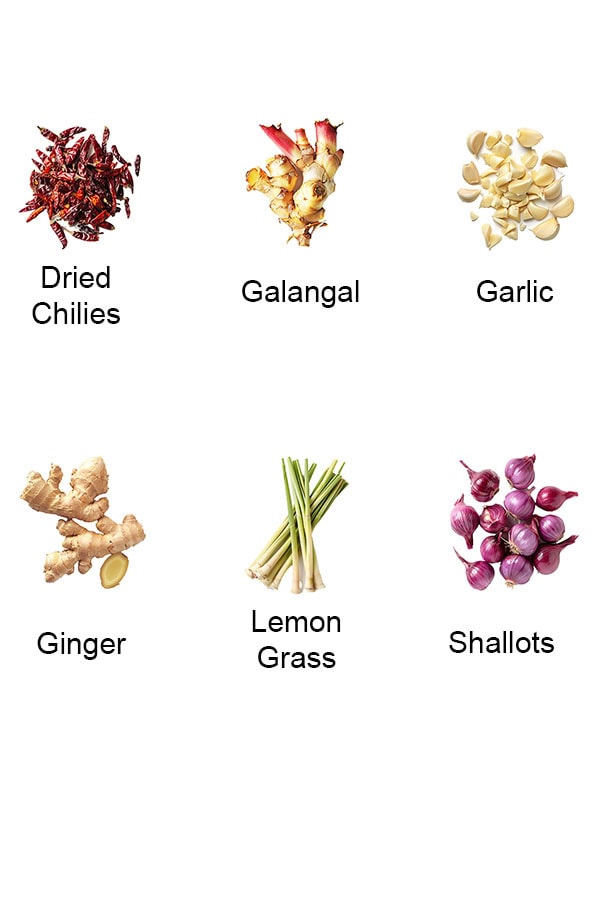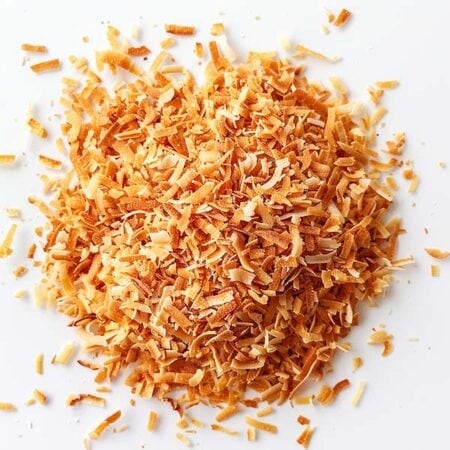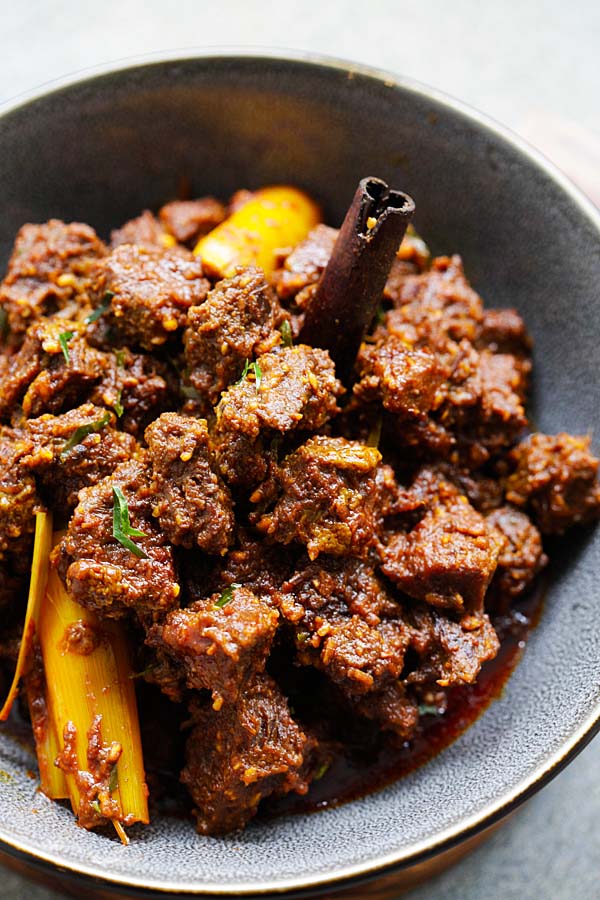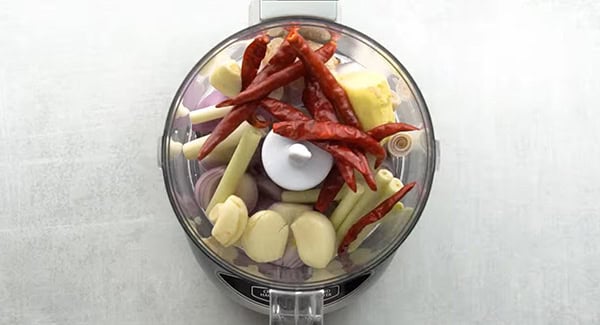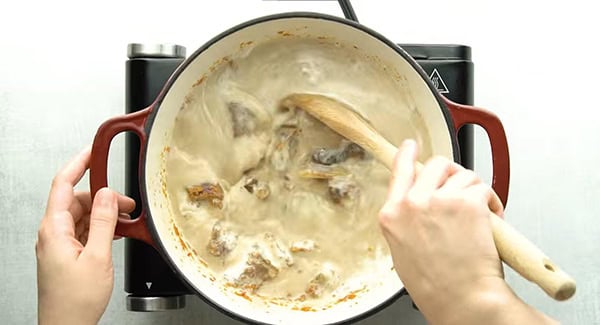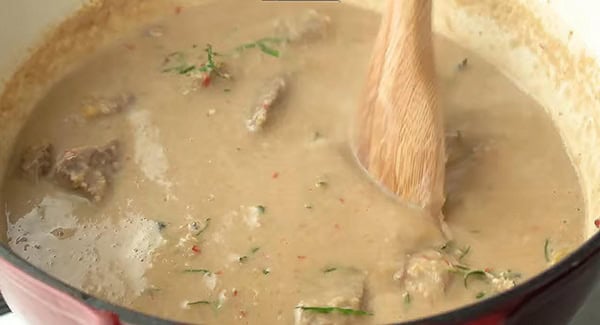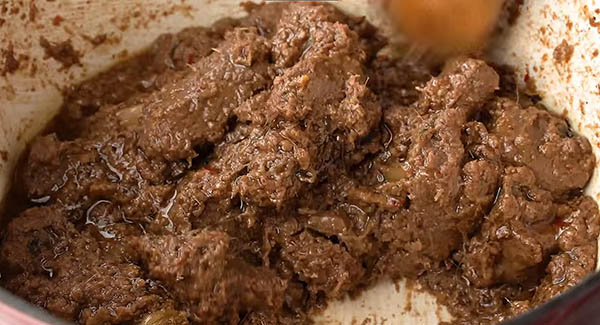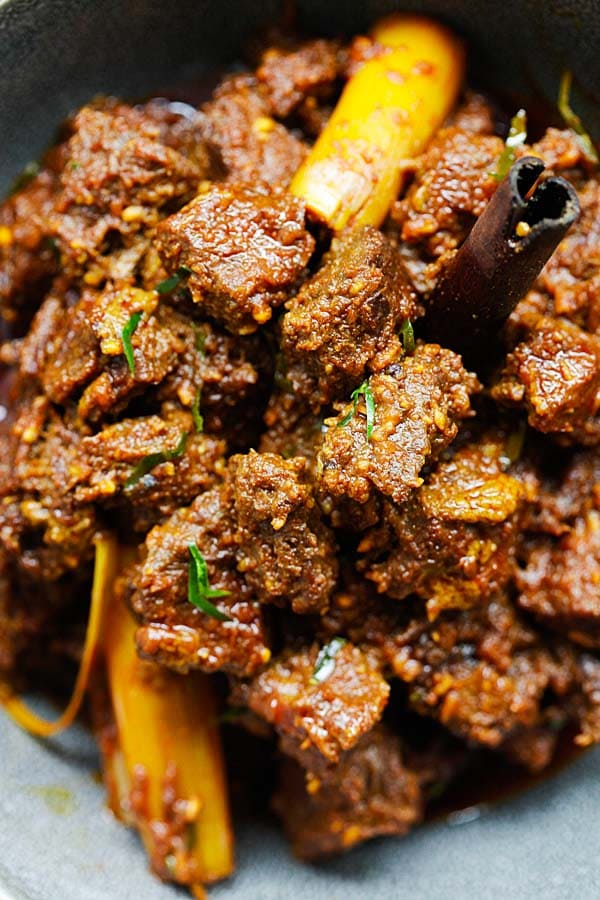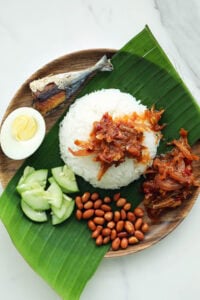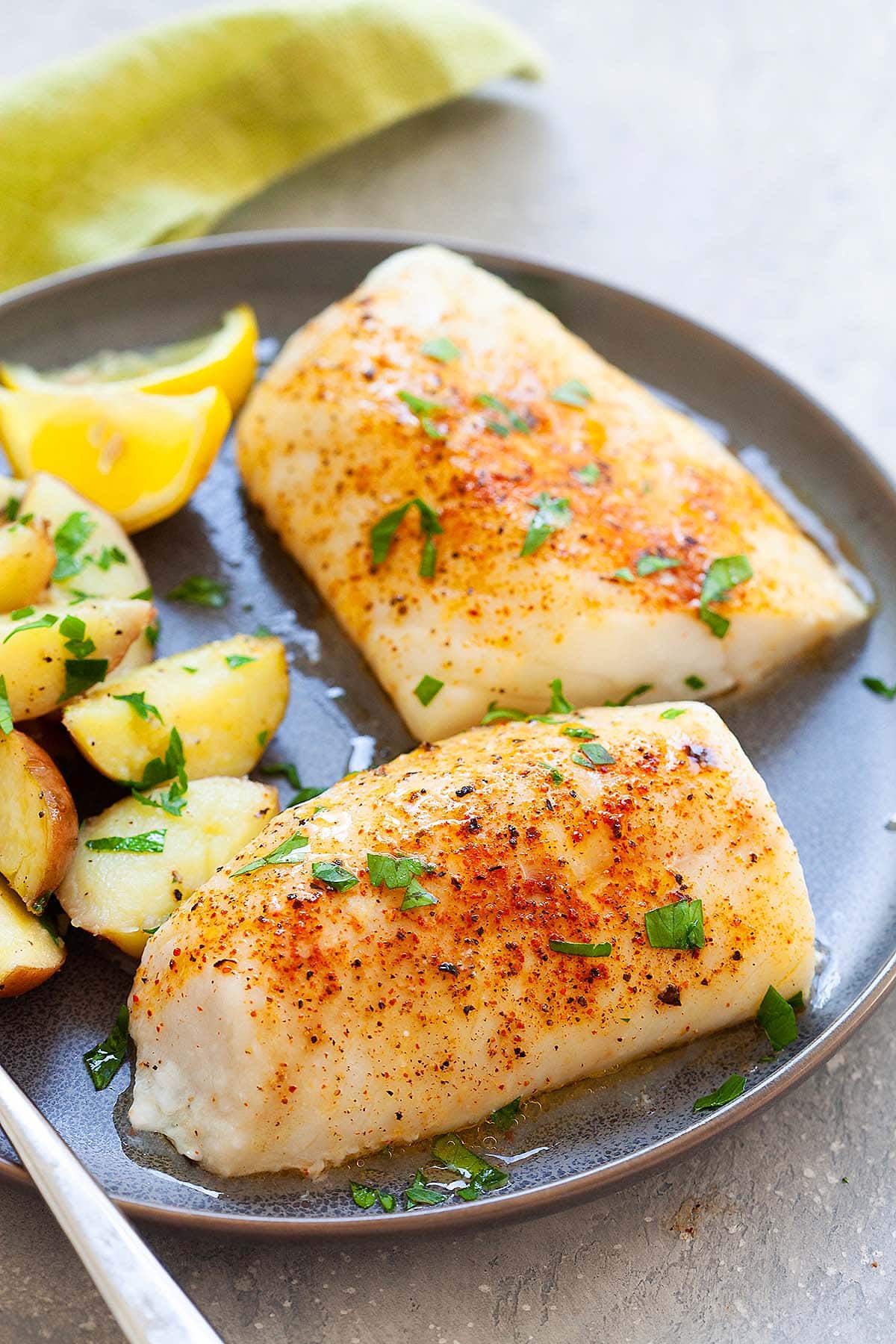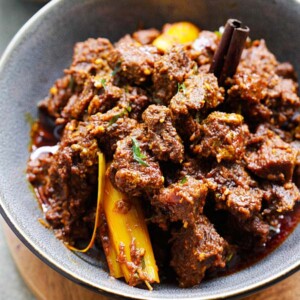Published Jun 08, 2024 Updated Nov 03, 2024 Other than that, it’s also the #1 dish on the World’s 50 Best Foods compiled by CNN. As more chefs learn to cook beef rendang, there have been many controversies about the recipe and cooking methods of the dish. In 2018, a Masterchef UK judge criticized a Malaysian-born contestant’s rendang for not being crispy. His comment drew massive uproars on social media with many Asians pointing out that rendang is not meant to be crispy but rather a rich and tender stew. Ultimately, the protein used in the recipe is never deep-fried, but simmered and then stewed for hours with spices and coconut milk. The end result should be a rich, tender, and deeply flavorful meat stew. Make a batch of this Malaysian beef rendang recipe and enjoy bowls of spicy, creamy, and tender beef stew for days. It is the most authentic beef rendang recipe you’ll find online with over 700 votes and an average rating of 4.6! It is often served on ceremonial occasions to honor guests and celebrate special events, making it an integral part of Indonesian culture. I believe the dish came to Malaysia when the Minangkabau settlers from Sumatra migrated to the southern part of the Malay Peninsula during the era of the Melaka Sultanate. Malaysians, especially the Malay community, love rendang just as much that it has become a staple in their cuisine as well. The core of beef rendang is the spice paste, as well as the various aromatic spices: cinnamon, cardamom pods, cloves, and star anise). Here are some of the main ingredients, including what you will need for the spice paste:
Boneless beef short ribs – this is the best cut of beef for this recipe. Make sure to cut the beef into cubes. Make sure you don’t cut it too small as the meat might break apart after cooking. Coconut milk – if you like a creamier and richer taste, opt for coconut cream, which is thicker in consistency compared to coconut milk. Kaffir lime leaves – impart the iconic flora aroma and perfume the dish with citrusy fragrance. I recommend buying fresh leaves to get more of that citrusy flavor. They freeze really well, so you can buy a bunch and keep them in the freezer to use in Tom Yum Soup, Sambal Udang, and Beef Penang Curry. Spices – I use fresh cinnamon, cloves, star anise, and cardamom, but you can also use the powdered version. Tamarind juice – the tart tamarind balances out the richness of the coconut milk. I use tamarind pulp soaked in warm water, but you can also use tamarind puree. Kerisik – toasted grated coconut gives the dish a nutty and earthy flavor.
Rendang Spice Paste Ingredients
Dried chilies – add as much or as little as you like depending on preference. You can use half the amount in this recipe for a milder stew. Galangal – if you cannot find galangal, skip it altogether. It tastes like ginger but it is more sour and peppery. Lemongrass – use only the white part, slice thinly. Smash them a little bit using the back of your knife to infuse more flavor into the dish. Shallots Garlic Ginger
See the recipe card for full information on ingredients. Expert Tip #1: My late grandmother taught me the technique of pounding the kerisik using a traditional stone mortar and pestle. This process breaks down the fiber in the toasted shredded coconut and releases the fat contents in the toasted coconut. When adding pounded kerisik to the list of ingredients, you will have the richest, creamiest, and “lemak” (meaning “fat” in Indonesian-Malaysian language) rendang ever! Expert Tip #2: Another technique is to slow-cook the meat on low heat, preferably over a charcoal fire, in a clay pot, and cover it with its lid. In the modern-day kitchen, you can just use a pan or pot to slowly stew and simmer the beef and reduce the liquid during the cooking process. You’ll get the most tender and melt-in-your-mouth soft meat ever! For vegans and vegetarians, you can certainly use fried tofu or tempeh. For seafood lovers, rendang prawn (shrimp) is a good option. Regardless of which protein you use, slow-cooked beef rendang is absolutely delicious and best with steamed rice like nasi lemak. Pro tip: To prepare the kerisik, add the grated coconut to a dry wok and stir continuously until it turns golden brown. I suggest you make a big serving (you may double or triple this recipe), so you have some leftovers. The flavors and aroma become more intense the next day that some prefer to wait and eat it on the second day. In fact, the Minangkabau saves the dish for months as the complex taste and flavor develop over time. I hope you enjoy this post as much as I do. If you try my recipe, please leave a comment and consider giving it a 5-star rating. For more easy and delicious recipes, explore my Recipe Index, and stay updated by subscribing to my newsletter and following me on Facebook, Pinterest, and Instagram for new updates.

